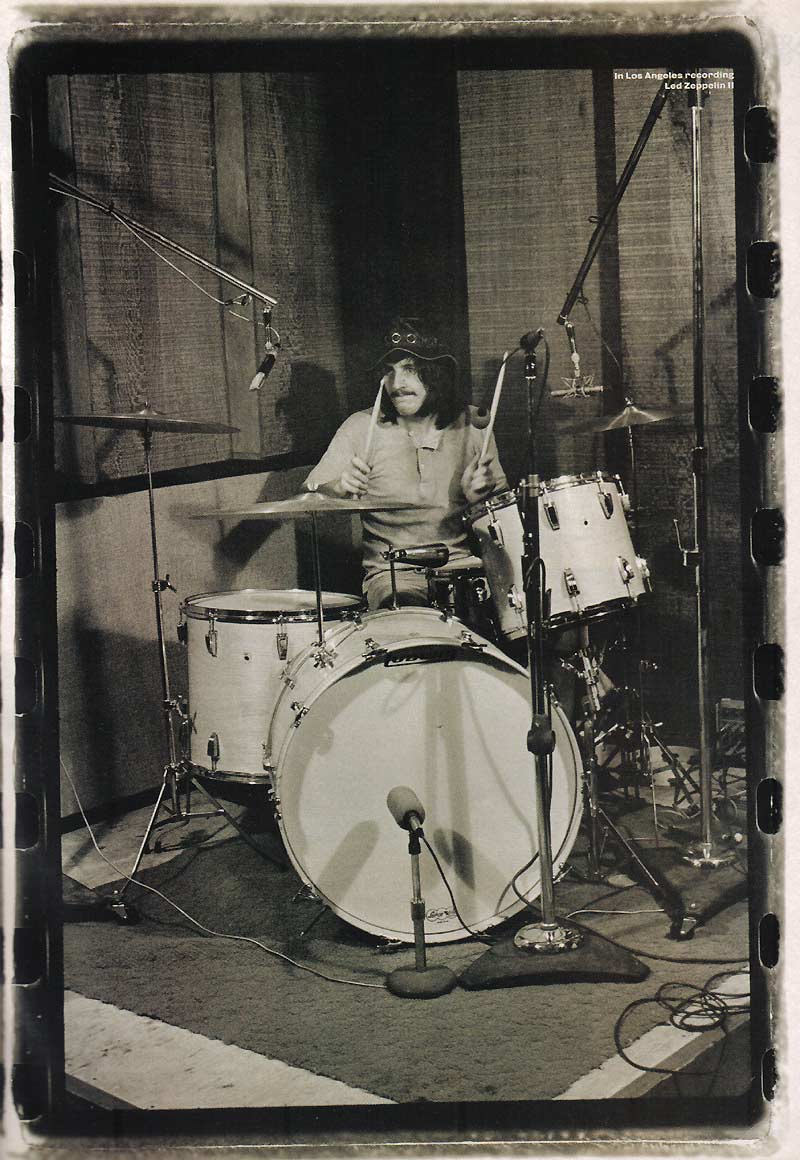
by John Paterno
Credits: Soraya, Robbie Williams, The Steve Gadd Band, Steve Porcaro, Tim McGraw, Bonnie Raitt, and more
 I still get slightly nervous when the moment comes. I’ve got the mix to the point where it is ready to be heard by my clients, who have spent countless hours trying to realize their vision for the song. They are trusting me to understand their vision and to make it happen. I call them into the control room, or hit send on the download link email. And then I wait for their comments.
I still get slightly nervous when the moment comes. I’ve got the mix to the point where it is ready to be heard by my clients, who have spent countless hours trying to realize their vision for the song. They are trusting me to understand their vision and to make it happen. I call them into the control room, or hit send on the download link email. And then I wait for their comments.
My reaction to their critique is always a pivotal point in bringing the mix to completion. Here are a few things I've come to realize when the comments start coming in and how I like to manage the whole mix-feedback process:
1. Develop a ‘vocabulary’ with my client
 Some things might be obvious when they are written or said – more vocal, more bass, less guitar, etc., but many times comments are about the feel or the vibe of a sound or the entire mix. Even though we speak the same language, one person’s definition of a word can be quite different than that of another. We have different backgrounds and experiences, and the language we choose is a result of that.
Some things might be obvious when they are written or said – more vocal, more bass, less guitar, etc., but many times comments are about the feel or the vibe of a sound or the entire mix. Even though we speak the same language, one person’s definition of a word can be quite different than that of another. We have different backgrounds and experiences, and the language we choose is a result of that.
 As a mixer, part of my job is to really understand what the client wants. The word ‘warm’ is a perfect example. I hate that word as an audio description, precisely because it can mean so many things to so many different people! My general approach when I don’t understand a comment is to ask more questions, instead of making assumptions. The sooner you get a few more descriptive words, the quicker you’ll be able to translate it into a fix.
As a mixer, part of my job is to really understand what the client wants. The word ‘warm’ is a perfect example. I hate that word as an audio description, precisely because it can mean so many things to so many different people! My general approach when I don’t understand a comment is to ask more questions, instead of making assumptions. The sooner you get a few more descriptive words, the quicker you’ll be able to translate it into a fix.
 Someone once was looking for that ‘Led Zeppelin low end’ on the drums. But to me, those records do not have a lot of low end to them in that way. So, after thinking about my mix and their comment, my question was – ‘do you mean the amount of ‘roomy-ness’ on the drums, or the actual low frequency content?’ Turns out in this case it was the amount of room.
Someone once was looking for that ‘Led Zeppelin low end’ on the drums. But to me, those records do not have a lot of low end to them in that way. So, after thinking about my mix and their comment, my question was – ‘do you mean the amount of ‘roomy-ness’ on the drums, or the actual low frequency content?’ Turns out in this case it was the amount of room.
 Sometimes clients will give me numbers instead of descriptive words – "the guitars need more 3kHz", "the kick needs more 100Hz", etc. It’s best for me in these cases to listen and do what I feel is best. There are times when the client is right on, but other times, upon listening, the guitars actually need a dip at, say, 400Hz, and the kick will sound better if there was dip at 200Hz and a boost at 50Hz. I don’t even bother getting into the semantics with the clients at this point. It’s not worth bumming out the client or getting into a sidetracked discussion. It’s more important to get the job done. Sometimes I’ll let them know at the end of the project what I’ve done, if they are interested.
Sometimes clients will give me numbers instead of descriptive words – "the guitars need more 3kHz", "the kick needs more 100Hz", etc. It’s best for me in these cases to listen and do what I feel is best. There are times when the client is right on, but other times, upon listening, the guitars actually need a dip at, say, 400Hz, and the kick will sound better if there was dip at 200Hz and a boost at 50Hz. I don’t even bother getting into the semantics with the clients at this point. It’s not worth bumming out the client or getting into a sidetracked discussion. It’s more important to get the job done. Sometimes I’ll let them know at the end of the project what I’ve done, if they are interested.
2. Don’t take the comments personally
 Mixing is a funny discipline. I throw myself into this little world, I bring my aesthetic, enthusiasm and experience to the process, and I do my best to realize the vision I imagined for the song when I started. And then as soon as I present it, I have to pull my ego out of it. Because at the end of the day, it’s not my record. If they are not happy, I need to get to the bottom of it quickly – understand where I went wrong and figure out how to make it right for them. If I’ve done the job well, they will hopefully be stoked with the mix, the comments will be minimal, and not affect the overall picture in what I feel would be detrimental. And some of their ideas or level choices might indeed be better than what I’ve done. If they ask for something I feel is going to be a detriment or a problem, I will definitely let them know, and give them reasons as to why I feel it might not be such a good idea. If push comes to shove though, it’s their record.
Mixing is a funny discipline. I throw myself into this little world, I bring my aesthetic, enthusiasm and experience to the process, and I do my best to realize the vision I imagined for the song when I started. And then as soon as I present it, I have to pull my ego out of it. Because at the end of the day, it’s not my record. If they are not happy, I need to get to the bottom of it quickly – understand where I went wrong and figure out how to make it right for them. If I’ve done the job well, they will hopefully be stoked with the mix, the comments will be minimal, and not affect the overall picture in what I feel would be detrimental. And some of their ideas or level choices might indeed be better than what I’ve done. If they ask for something I feel is going to be a detriment or a problem, I will definitely let them know, and give them reasons as to why I feel it might not be such a good idea. If push comes to shove though, it’s their record.
 Here’s a quick story. After pushing up the tracks on a tune and working on it for a bit, I accidently ended up flanging the lead vocal with a plugin delay mismatch across the two parallel tracks the vocal was on. I LOVED what happened with it, so I kept it. And it inspired me to go in a specific direction with the whole concept. The tune happened to be a ballad (of course!), and their rough had a lot of reverb on the vocal and a dry piano. I went the opposite way with my mix – flanged, dry vocal in the verses and big, reverbed piano. The band was not into it. So I undid it all and gave them a version more like their rough. Then a funny thing happened. I missed my old approach, and asked what I could do to make it better. Turns out, the flange thing resonated in a weird way for the singer. So as a solution, I went back to the mix I liked and used a proper flanger plugin on it, but put the resonance in a different part of the spectrum. This is the version they kept for the record.
Here’s a quick story. After pushing up the tracks on a tune and working on it for a bit, I accidently ended up flanging the lead vocal with a plugin delay mismatch across the two parallel tracks the vocal was on. I LOVED what happened with it, so I kept it. And it inspired me to go in a specific direction with the whole concept. The tune happened to be a ballad (of course!), and their rough had a lot of reverb on the vocal and a dry piano. I went the opposite way with my mix – flanged, dry vocal in the verses and big, reverbed piano. The band was not into it. So I undid it all and gave them a version more like their rough. Then a funny thing happened. I missed my old approach, and asked what I could do to make it better. Turns out, the flange thing resonated in a weird way for the singer. So as a solution, I went back to the mix I liked and used a proper flanger plugin on it, but put the resonance in a different part of the spectrum. This is the version they kept for the record.
The only comment I’m not able to work around is the blank page. Sometimes the client is not into what you’ve done. Plain and simple. And when there is no constructive feedback or comments, there are zero ways to complete the mix. It’s a great big world out there, and sometimes I’m off base, or the client does a poor job describing what they are after. These can be the hardest situations for my confidence as a mixer. The best I can do is learn from it, and going forward try not to repeat any mistakes I may have made. It happens…
Here are a few thoughts on creating a good flow of communication in the revision phase of the mix:
3. Designate one person to deal with from the band/organization
 To avoid all the members of the band writing or calling with conflicting comments, I always make sure to request that all the comments are funneled through one person in the band or organization. This way they are all on the same page before I make any changes to the mix. And if the comments show up with conflicting requests, I ask for a clarification.
To avoid all the members of the band writing or calling with conflicting comments, I always make sure to request that all the comments are funneled through one person in the band or organization. This way they are all on the same page before I make any changes to the mix. And if the comments show up with conflicting requests, I ask for a clarification.
4. Decide the format for discussion
 I personally prefer email to deal with comments, since I feel it encourages clients to organize their thoughts as they type. It also gives me a nice list to reference and check off as I complete their requests. This works for a large majority of people, but not all of them. Some folks just need to talk, and that’s cool too. For me, the biggest issue with phone comments is reading my own handwriting!! Whatever you prefer to use, don’t be afraid to step outside the bounds. Sometimes a phone call for clarification is easier than typing a novel, and sometimes email is better due to the time of day.
I personally prefer email to deal with comments, since I feel it encourages clients to organize their thoughts as they type. It also gives me a nice list to reference and check off as I complete their requests. This works for a large majority of people, but not all of them. Some folks just need to talk, and that’s cool too. For me, the biggest issue with phone comments is reading my own handwriting!! Whatever you prefer to use, don’t be afraid to step outside the bounds. Sometimes a phone call for clarification is easier than typing a novel, and sometimes email is better due to the time of day.
At the end of the day, creating a good rapport with your clients will make the final stages of the mix a much more fruitful, efficient, and enjoyable experience for both parties.

John Paterno is an Grammy winning LA-based recording and mixing engineer. He has worked with a wide range of artists in his 25+ years in the music business including Soraya, Robbie Williams, The Steve Gadd Band, Steve Porcaro, Tim McGraw, Bonnie Raitt, and more.
Check out his full length mixing tutorial where he mixes the song "Don't Stop Talking" by Robbie Williams from start to finish showing you some of his signature mixing tips and tricks all along the way.